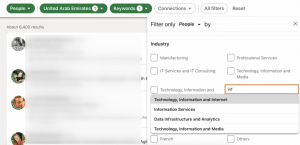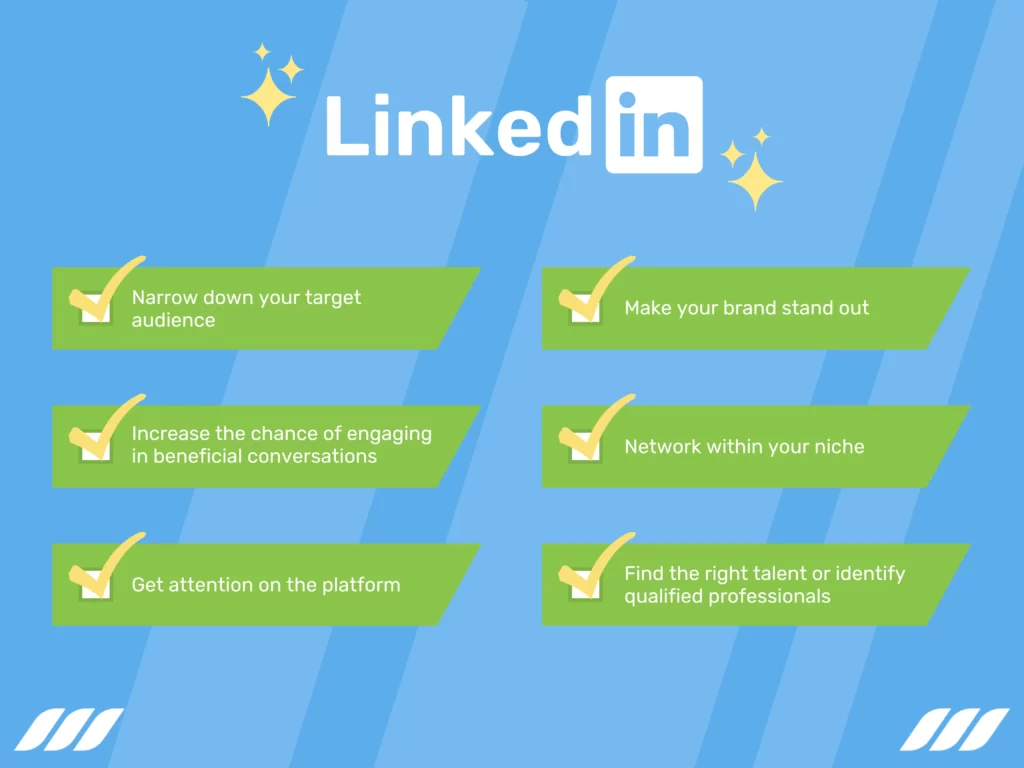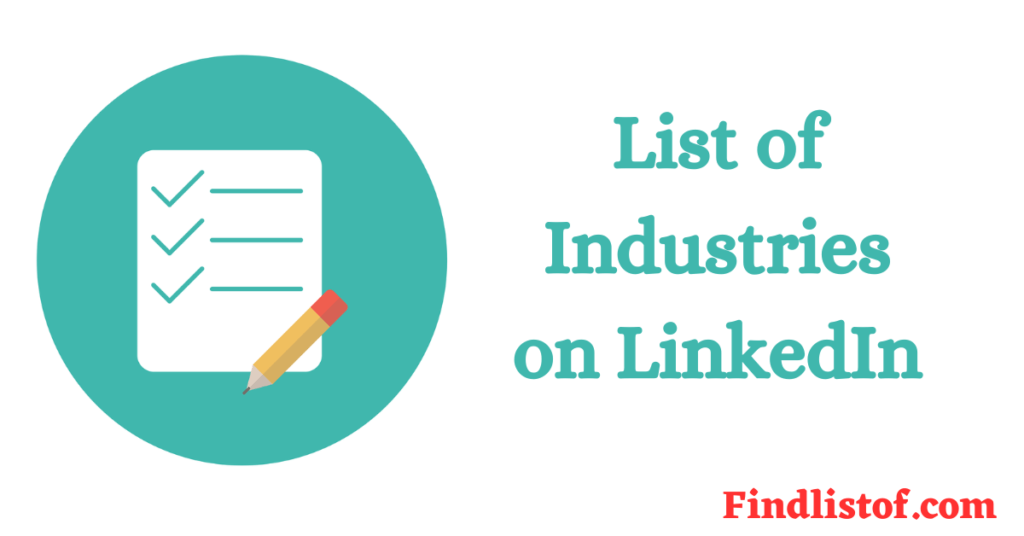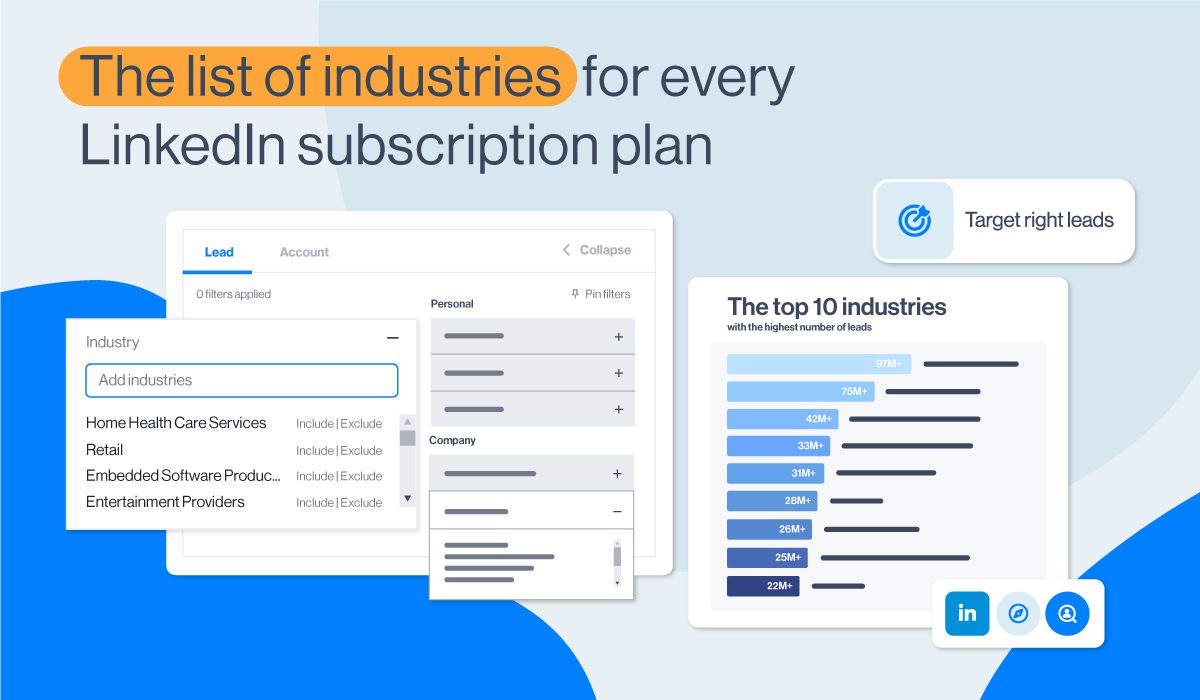When you're unemployed, your LinkedIn profile becomes a vital tool in your job search. It's not just an online resume; it's your personal brand in the professional world. An effective LinkedIn profile can connect you with potential employers, showcase your skills, and reveal opportunities that aren't advertised elsewhere.
Here’s why having a strong LinkedIn presence is essential:
- Visibility: Recruiters often use LinkedIn as their primary platform for searching candidates. A well-optimized profile ensures you show up in their searches.
- Networking: LinkedIn allows you to connect with former colleagues, industry leaders, and professionals in your desired fields. Building a strong network can lead to job referrals and recommendations.
- Skill Showcase: Your profile can highlight your unique skills, endorsements from peers, and recommendations that validate your experience.
- Industry Insights: By following thought leaders and companies in your field, you can stay updated on industry trends and opportunities that may arise.
Moreover, when you actively engage with content related to your field, such as sharing articles or commenting on discussions, you increase your visibility even further. This engagement reflects your enthusiasm and keeps you in the minds of your connections. In a competitive job market, this can give you an edge over other candidates.
Ultimately, your LinkedIn profile isn't just a digital presence; it's an essential tool to take charge of your job search and present yourself in the best light possible. With thousands of hiring managers and recruiters using LinkedIn daily, don’t underestimate its potential!
Assessing Your Skills and Experience

Before you decide which industry to list on LinkedIn, it's essential to take a step back and evaluate your skills and experiences. This assessment will help you ensure that you align your profile with industries that match your strengths and interests, making your application stand out to potential employers.
Start with a self-assessment. Here’s how:
- List Your Skills: Create a comprehensive list of both hard and soft skills. Hard skills could include software proficiencies, technical abilities, or certifications, while soft skills might cover communication, teamwork, or problem-solving.
- Reflect on Past Experiences: Think about previous jobs, internships, or volunteer roles. What tasks did you excel at? What did you enjoy doing the most? This reflection can guide you toward industries that resonate with you.
- Gather Feedback: Don’t hesitate to reach out to former colleagues or supervisors for their input. They may identify skills you overlooked or provide insights into how others perceive your strengths.
Next, consider the transferability of your skills. In today’s job market, many skills overlap across industries. For example, project management skills can apply to roles in tech, healthcare, or finance. Ask yourself:
| Skill | Industry 1 | Industry 2 |
|---|---|---|
| Project Management | Tech | Healthcare |
| Data Analysis | Marketing | Finance |
| Customer Service | Retail | Hospitality |
Once you’ve assessed your skills and experiences, it's time to identify which industries resonate with your strengths. Explore industries that are actively hiring and consider the following:
- Job Market Trends: Research which industries are growing and have a high demand for talent. Sites like LinkedIn, Glassdoor, or the Bureau of Labor Statistics can provide valuable insights.
- Your Passion: Choose an industry that excites you. Passion for your work can lead to greater job satisfaction and success in the long run.
- Work Environment: Think about the type of work environment you thrive in. Do you prefer corporate settings, startups, or perhaps remote work?
By taking the time to assess your skills and experiences thoroughly, you set a solid foundation for choosing the right industry for your LinkedIn profile. The clearer you are about your strengths, the easier it will be to present a compelling case to potential employers!
Also Read This: Can People See When You Search Them on LinkedIn? Exploring Privacy Settings
Identifying Relevant Industries

Choosing the right industry to list on your LinkedIn profile when you’re unemployed can feel like a big decision. After all, the industry you choose sets the tone for your personal branding and the opportunities that may come your way. But don’t worry! There are some effective strategies to help you pinpoint the industries that not only match your skills and interests but also offer you the best chances for employment.
Start by reflecting on your past experiences. Think about all the roles you’ve held and the industries you’ve worked in. Write down:
- The different sectors you’ve been involved to.
- The skills you utilized in those roles.
- Any certifications or specialized training you may have received.
Once you have that list, do some research. Check out job boards, LinkedIn profiles of professionals in your network, or industry reports. This will allow you to:
- Identify industries that are currently hiring.
- Look for trending sectors that align with your interests.
- Gain insights into potential career growth opportunities.
Another great way to discover relevant industries is by joining LinkedIn groups or forums related to your field. Engaging with these communities can provide you with valuable information about which industries are thriving and what companies are looking for talent. Remember, networking doesn’t always have to be face-to-face; it can happen virtually too!
Consider your personal interests and passions as well. If you deeply care about technology, health, or the environment, there are likely a plethora of industries that touch on these areas. Listing an industry that resonates with you personally can make it easier to stay motivated while job hunting.
Lastly, don’t be afraid to think outside the box. Sometimes the industries you hadn’t considered might surprise you. For example, if you’ve worked in retail, skills like customer service, inventory management, and sales can translate perfectly into roles in sectors like e-commerce or logistics.
In summary, the key steps to identifying relevant industries include:
- Reflect on your past experiences.
- Conduct thorough research on job trends.
- Engage with online communities for insights.
- Align your personal interests with your industry choices.
- Be open to exploring new and unexpected sectors.
Also Read This: How to Export LinkedIn Contacts to Excel for Better Networking
Strategies for Highlighting Transferable Skills

So, you’ve identified the industries you want to target on LinkedIn. Now, how do you make your profile shine when you're unemployed? The trick lies in effectively showcasing your transferable skills. Even if you haven’t worked in a particular field before, chances are you have skills that can apply to new situations. Here are some strategies to help you draw attention to those skills!
First, start with an inventory of your skills. Think about not only hard skills but also soft skills. Here are some examples:
- Hard Skills: Technical knowledge, software proficiency, and marketing tactics.
- Soft Skills: Communication, teamwork, problem-solving, and adaptability.
Once you have your list, it’s crucial to back it up with specific examples. Instead of just stating that you have "excellent communication skills," share a brief story about a situation where you used that skill effectively. For instance:
Example: "In my previous role, I led a team meeting that involved resolving a significant project roadblock, ensuring everyone understood their tasks and fostering an environment for open dialogue."
Next, tailor your LinkedIn summary and experience sections to reflect the skills relevant to the industries you've chosen. Use keywords from job descriptions that resonate with your background. This not only shows potential employers that you understand what is required in their industry but also boosts your chances in LinkedIn searches.
Networking can also be a powerful way to highlight your skills. Engage with industry-specific content, comment on discussions, and share articles or insights. By demonstrating thought leadership, you can present yourself as a candidate who’s not just looking for a job but is genuinely invested in the industry.
Another effective strategy is to seek recommendations from previous colleagues, supervisors, or clients who can vouch for your skills. Positive testimonials can differentiate you and add credibility to your profile.
Lastly, consider creating content that showcases your expertise and knowledge. Write articles, share relevant news, or post about projects you've worked on, even if they’re from volunteer experiences or freelance work. This demonstrates your passion and commitment to the industry, helping you stay relevant while job searching.
In summary, to effectively highlight your transferable skills on LinkedIn:
- Make a comprehensive list of hard and soft skills.
- Use specific examples to provide context for your skills.
- Tailor your profile to target industry keywords.
- Network actively and engage with industry content.
- Gather recommendations and consider creating content to showcase your expertise.
Using these strategies, you'll not only stand out in your job search but also empower yourself to transition into new and exciting roles!
Also Read This: How to Ask for a LinkedIn Recommendation Without Being Awkward
5. Building Your Network While Unemployed

When you're unemployed, it can feel daunting to think about networking. However, this is the perfect time to reach out and establish connections that may lead to job opportunities. Building your network during unemployment isn't just about looking for a job; it's about fostering relationships that can support you in the long run. Here are some tips to effectively build your network:
- Leverage Social Media: Platforms like LinkedIn are ideal for connecting with industry professionals. Share insights, comment on posts, and join relevant groups to engage with others in your field.
- Attend Networking Events: Look for virtual or in-person networking events, workshops, or conferences related to your industry. These events are great opportunities to meet people who can help you with your job search.
- Reconnect with Old Colleagues: Don’t hesitate to reach out to former colleagues or classmates. A quick message asking how they’ve been can rekindle connections that may lead to opportunities.
- Ask for Informational Interviews: Connect with people in roles that interest you and request a brief chat. Most professionals are happy to share their experiences and advice, which can give you valuable insights into your desired industry.
- Be Genuine: When networking, focus on building authentic relationships rather than simply seeking a job. Show genuine interest in others’ work and experiences, and be open to sharing your own story.
Remember, networking isn’t a one-way street. While it’s important to seek help and advice, you should also be ready to offer assistance to others whenever possible. Building a strong network takes time, so be patient and focus on developing meaningful connections.
Lastly, keep your LinkedIn profile updated with your experiences and skills. Share relevant articles or insights related to your industry. This visibility can attract connections and make it easier for others to reach out to you.
Also Read This: Is It Easy to Build Engagement on LinkedIn? Insights from Reddit Users
6. Optimizing Your LinkedIn Profile for Job Searches
Your LinkedIn profile is often the first impression you’ll make on potential employers, especially when you’re unemployed and actively searching for a new role. To make your profile stand out, consider the following optimization strategies:
- Professional Profile Photo: Choose a high-quality, professional-looking photo. Profiles with photos receive significantly more engagement than those without.
- Compelling Headline: Instead of just listing your job title, consider including keywords that reflect your skills and aspirations. For example, “Marketing Specialist | Content Creator | Social Media Enthusiast.” This helps recruiters see your potential immediately.
- Detailed Summary: Write a summary that tells your story. Highlight your key achievements, skills, and what you’re looking for moving forward. Use this section to showcase your personality and passion.
- Experience and Achievements: Detail your previous roles and accomplishments. Use bullet points for clarity and focus on quantifiable achievements (e.g., “Increased sales by 20% within 6 months”) to showcase your impact.
- Skills and Endorsements: List relevant skills that match your career goals. Don’t hesitate to ask colleagues or friends to endorse your skills; this adds credibility to your profile.
- Engage with Content: Share articles, comment on posts, and create original content that reflects your expertise and interests. This activity keeps your profile active and visible to your network.
By optimizing your LinkedIn profile, you can enhance your visibility to recruiters and increase your chances of landing interviews. Make sure your profile is not just a resume but a comprehensive representation of who you are as a professional.
Lastly, remember that the job search can be a journey filled with ups and downs, so stay positive and proactive. With a solid network and a well-optimized LinkedIn profile, you're already on your way to finding the right opportunities!
Also Read This: How to Promote a Post on LinkedIn to Increase Engagement
7. Using LinkedIn Groups and Communities to Your Advantage
When you're unemployed and looking to stand out in a crowded job market, LinkedIn groups and communities can be your secret weapon. These groups are like online forums where like-minded professionals gather to share insights, news, and, yes, job opportunities! But how do you effectively leverage these gatherings? Let’s break it down.
Join Relevant Groups: Start by searching for groups that align with your career interests or the industry you're targeting. Use LinkedIn's search bar and type in keywords related to your desired field, followed by the word "group." For instance, if you’re interested in digital marketing, look up “Digital Marketing Professionals.” You’ll be amazed at how many engaging communities are out there!
Participate Actively: Once you join these groups, don't just lurk around. Dive in! Share your thoughts on discussions, answer questions, and post valuable content. This engagement not only helps you make connections but also showcases your expertise, making you more visible to potential employers.
- Comment: When someone shares an interesting article, comment on it. Add your insights or ask further questions.
- Post Questions: If you’re curious about something in your field, don’t hesitate to ask the group. This can spark discussions and put you on the radar of other professionals.
- Share Opportunities: If you come across job openings or resources that can benefit others, share them! The goodwill can come back to you when group members spot opportunities for you.
Networking Events: Many groups organize virtual networking events or webinars. These are golden opportunities to meet industry leaders and fellow job seekers. Prepare a brief introduction about yourself and your job search aspirations, so you can make a strong impression.
Follow Up: After meeting someone in a group or event, follow them up with a quick message on LinkedIn. Thank them for the connection and perhaps reference something you discussed. This personal touch can leave a lasting impression.
Remember, LinkedIn isn’t just a platform for job searching—it's a dynamic ecosystem where professionals thrive by connecting, learning, and supporting one another. So make the most of these groups and watch your network grow!
8. Conclusion: Staying Proactive in Your Job Search
As you navigate the often challenging waters of unemployment, remember that taking control of your job search is key. Here’s a quick recap of the strategies we’ve covered, followed by some final thoughts to keep your spirits up.
- Define your industry focus clearly.
- Utilize LinkedIn to showcase your skills and experiences.
- Engage with LinkedIn groups and communities.
- Network relentlessly and reach out to connections.
- Keep your profile updated and compelling.
Stay Positive: Job searching can feel daunting, and it’s easy to get disheartened. Take breaks when needed, and focus on self-care. Surround yourself with supportive friends and family who can encourage and uplift you during this time.
Set Goals: Break down your job search into manageable goals. Whether it's sending out a certain number of applications each week or connecting with new professionals in your desired field, having benchmarks can keep you motivated.
Celebrate Small Wins: Did you get a response from a recruiter? That’s something to celebrate! Small victories can keep your spirits high and remind you that progress is being made, even if it feels slow at times.
In conclusion, staying proactive is your best asset during unemployment. Remember, you’re not alone in this journey; many are in the same boat, and leveraging tools like LinkedIn can help you not only find opportunities but also connect with people who can make the process a little easier. Stay proactive, keep engaging, and before you know it, you’ll be back in the workforce, ready for the next chapter in your career!
 admin
admin








